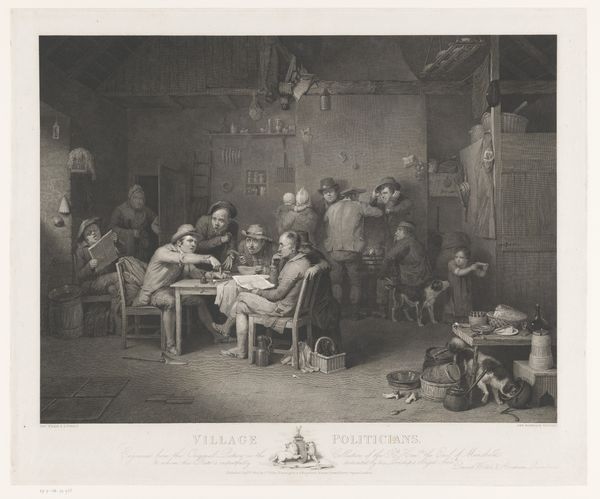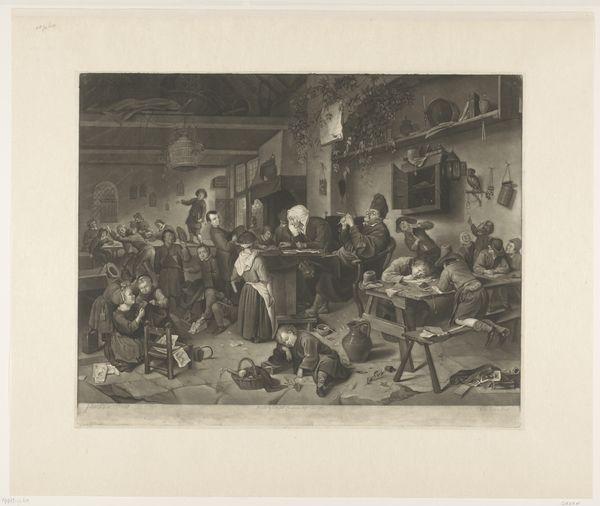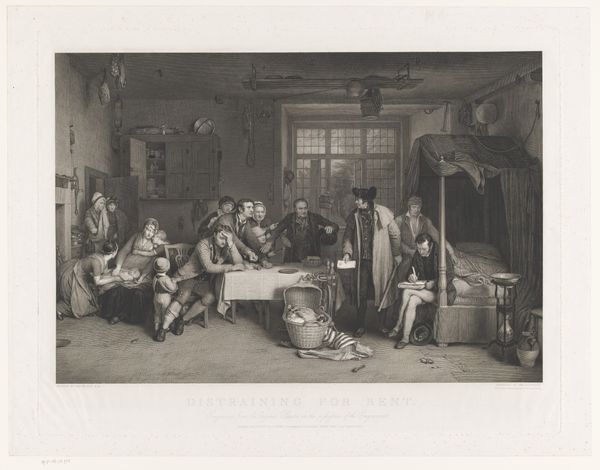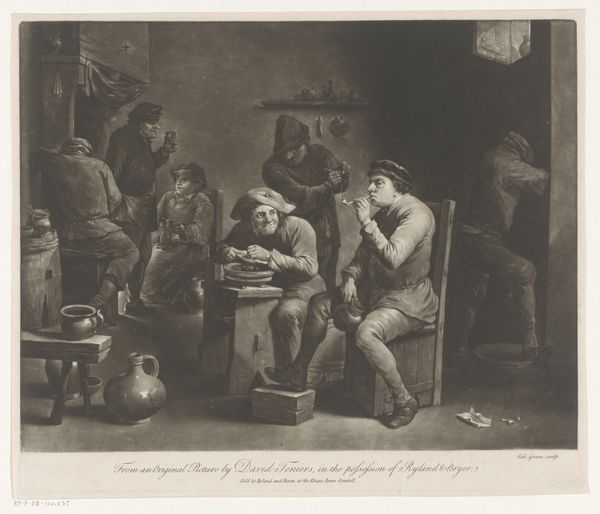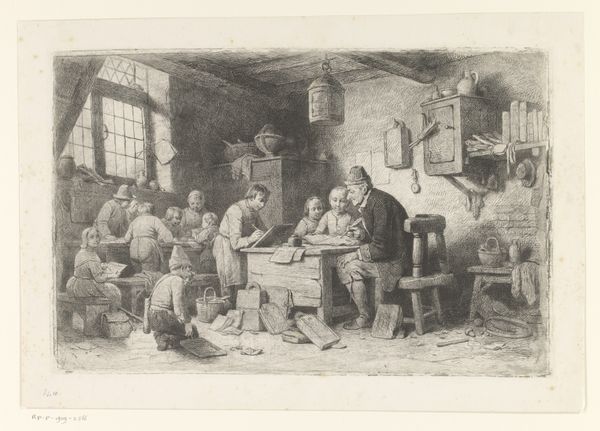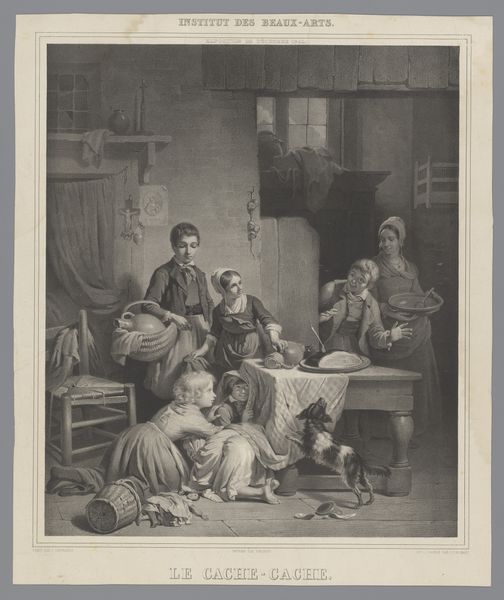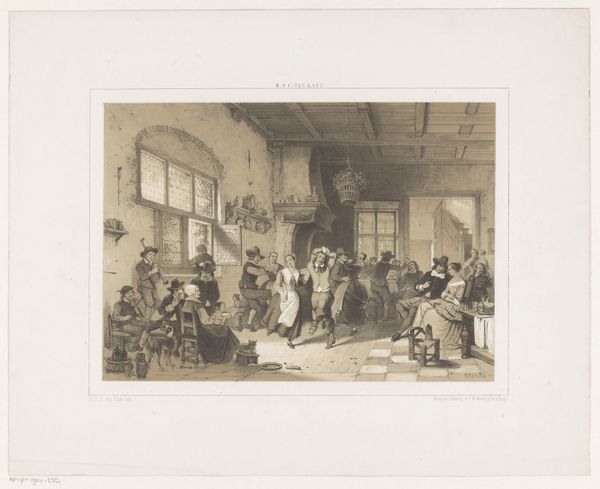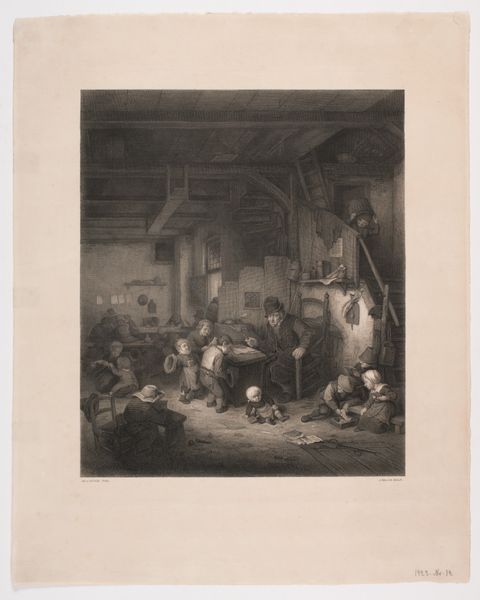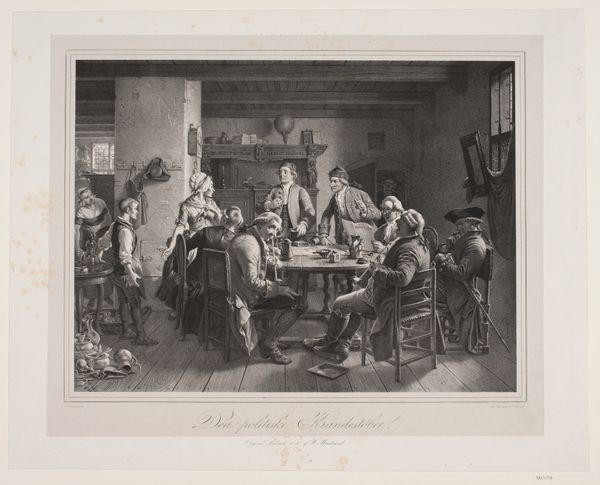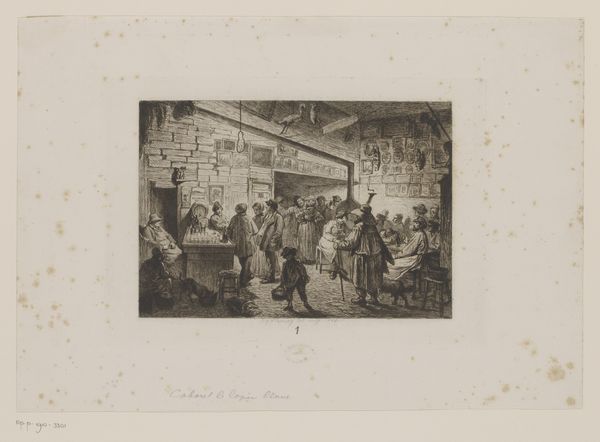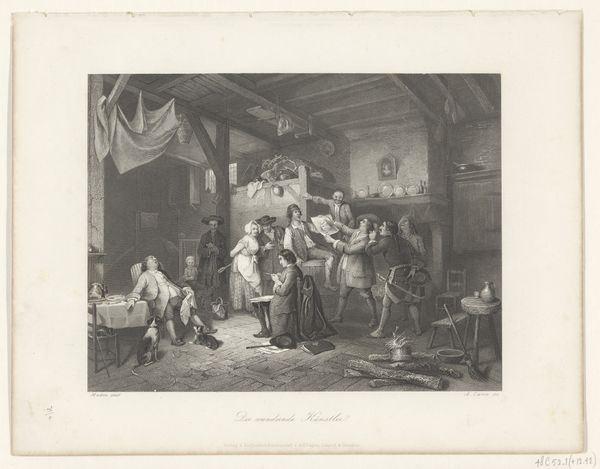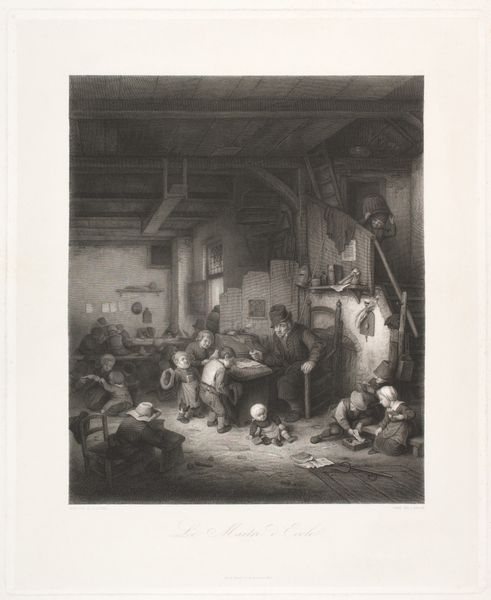
engraving
#
narrative-art
#
romanticism
#
genre-painting
#
engraving
Dimensions: height 487 mm, width 589 mm
Copyright: Rijks Museum: Open Domain
Curator: This piece, crafted in 1811 by John Burnet, is an engraving titled “Blind Fiddler in the Cellar of a Poor Family." What feelings stir in you upon viewing it? Editor: Well, it certainly conjures a potent atmosphere. The sheer density of bodies crammed into what feels like a suffocating space—and look at how the light struggles to break through! My first instinct is one of claustrophobia mixed with pity. All those people and the fiddle—presumably trying to find warmth from their hard circumstances? What were Burnet's materials like? Curator: It's rather interesting that you noticed the "warmth", or lack thereof. I immediately saw it! In that sense, Burnet uses his instrument for social observation. I wonder what the experience was like using that kind of metal and acid bath? I feel like Burnet really invites us in the way he uses sharp definition but he does so through many tones instead of hard contrasts of light. Did he invite this intimacy in the studio when developing this print, one must wonder. Editor: Yes, thinking about the printing process, it must have been painstaking to translate the nuances of tone into etched lines on a metal plate. And I bet those copper plates must have been expensive... it leads me to ponder questions of labor, economics, and class! Here, Burnet really gives that lived environment for poorer people but romanticized enough that there is an entire narrative happening. But what else? Curator: What grabs me is the contrast. You have destitution in the architecture, and the obvious marks of labor scattered on the ground next to some food. And there are very little windows to look out towards in contrast to their lives that seem to stay at home or close by. What kind of release does a poor fiddler bring, though. Does he simply give them a purpose or something different to observe in contrast? Editor: Exactly! You're talking about how music acts almost like a raw material in itself, right? I suppose what Burnet really emphasizes is that everyone participates together to achieve a sense of social dignity when circumstances deny so. It looks that music can lift spirits if anything is possible at all! It's something the modern man knows but never gives it second thought given access to streaming etc. Curator: Beautifully observed. Yes, it speaks to resilience. This journey into "Blind Fiddler in the Cellar of a Poor Family” offers an understanding and interpretation of resilience when society challenges us with great challenges. It can't be too good or it looks bad for us otherwise, Burnet subtly tries to suggest, too. Editor: Well, delving into it, considering its materiality, has certainly enriched my perception of its thematic impact. Music for all! Or what, let everyone stay put? This Burnet character is complex...
Comments
No comments
Be the first to comment and join the conversation on the ultimate creative platform.
